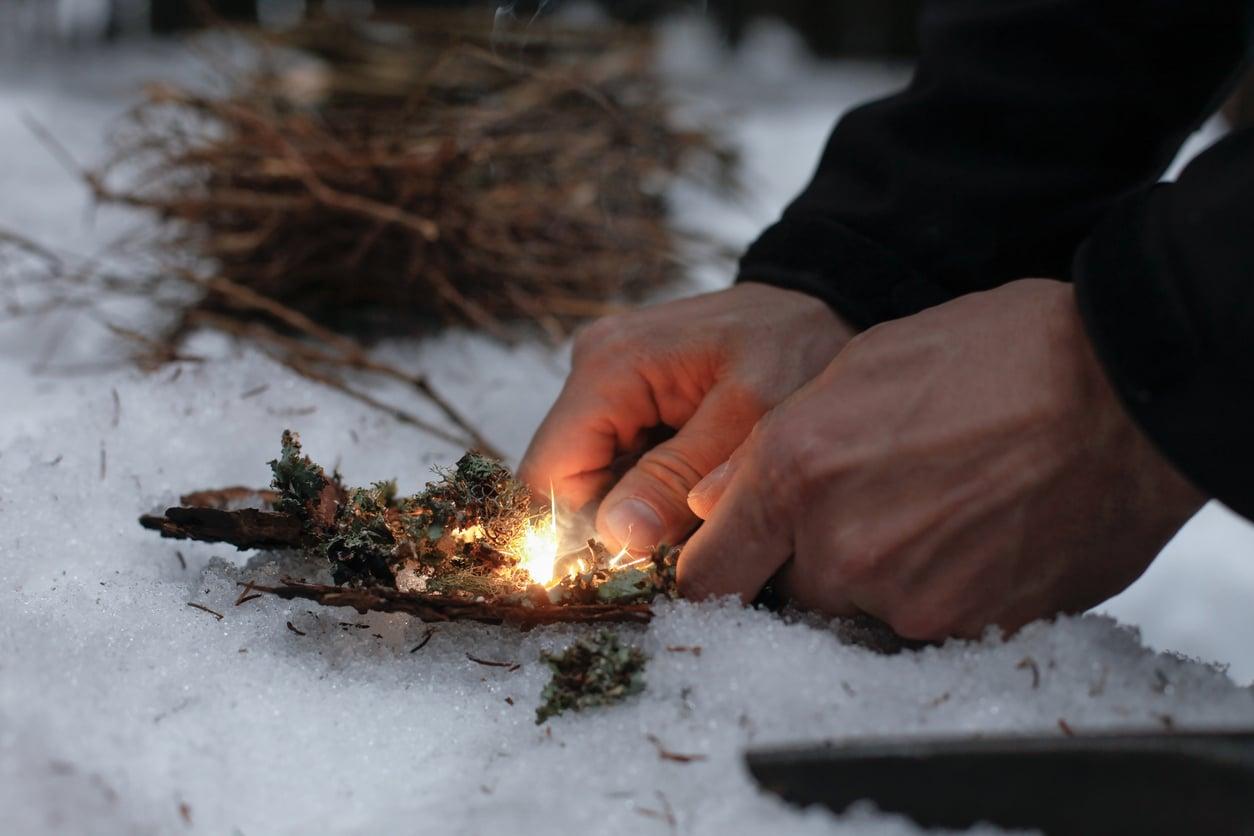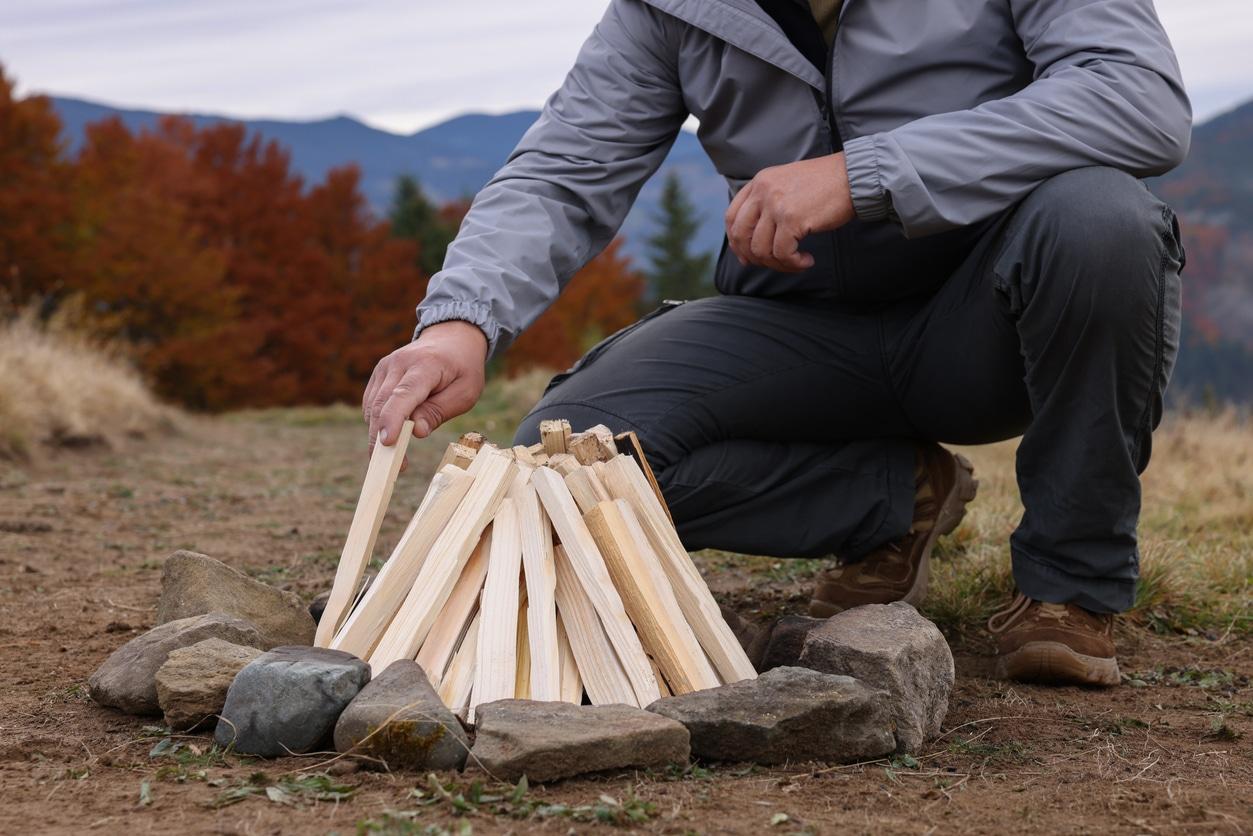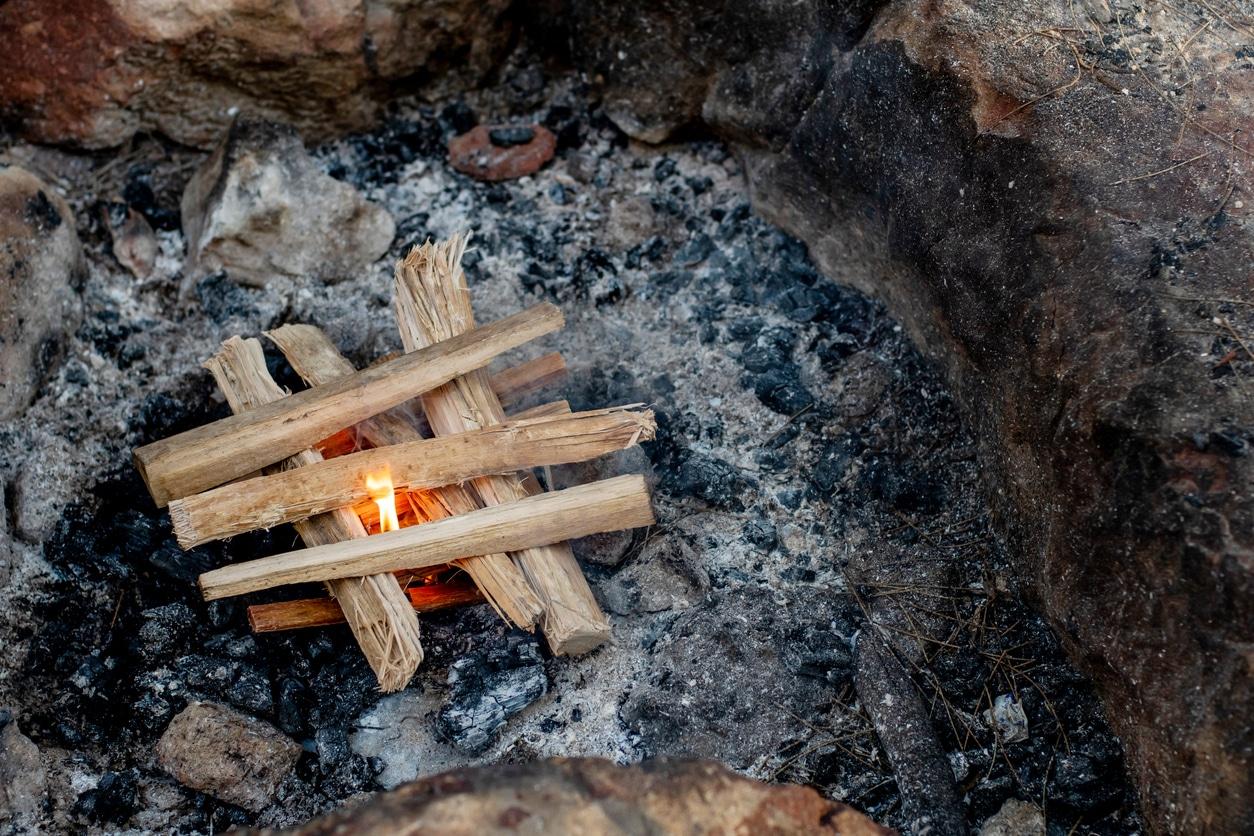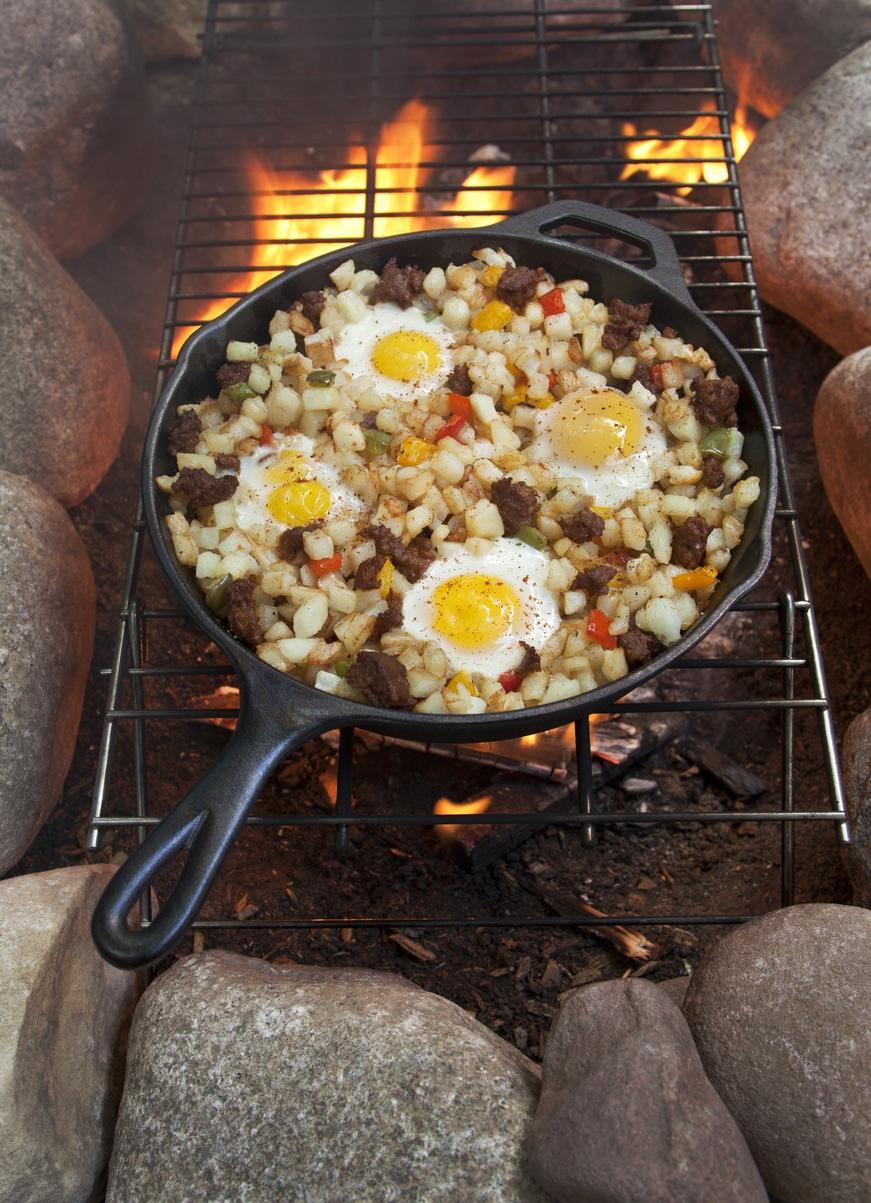There’s something about a campfire that feels right – like you’re really camping. It’s the perfect way to cook food, keep warm, and relax under the stars. Here are some tips for making the perfect campfire. Whether you are camping, or sitting under the stars by your adventure van.
How to Build a Campfire
Building a campfire is an essential skill for anyone who enjoys spending time outdoors, whether you’re a seasoned RV camper or a weekend warrior. More people spend time in the outdoors for the first time as campers and RVers. Many of us don’t have the same level of bushcraft as those folks in reality TV series about survival, though with a little practice, you can build a campfire that will keep you warm all night long.
You need dry wood, a source for a spark, and some tinder.
When picking a spot for your campfire, make sure to find an area that is clear of trees and bushes. You’ll also want to ensure the ground is level so the fire won’t tip over.
A fire striker is a great way to start a fire, because it requires no lighter fluid. Plus, it’s more environmentally friendly. However, having a lighter is much easier to get a fire started. Using a high output butane lighter or torch (affiliate link) is a convenient way to start a fire, but having a weatherproof lighter is a good backup plan. To start a fire with a fire striker or Fero rod, gather a tinder bundle of flammable material and then scrape the rod with a piece of steel to create sparks. 
1. Choose your spot and clear away any debris.
2. Create a ring of stones around the fire pit.
3. Build a teepee out of sticks for kindling.
4. Place your tinder in the center of the teepee.
5. Use your lighter to ignite the tinder.
6. Once the flames catch, add more wood to keep the fire going.
Natural ones like pinecones are some of the best camping fire starters. You can also purchase commercial fire starters made of wax and sawdust.
The teepee method is one of the most common ways to build a campfire. To start, gather a teepee-shaped bundle of tinder and place it in the center of your fire pit. Then, arrange your pyramid of kindling around the tinder, making sure to leave space for oxygen to circulate. Once your teepee is in place, light the tinder under the structure and allow the flames to work their way up through the kindling. As the teepee burns, the flames will ignite the larger pieces of wood, resulting in a hot and steady fire. With a little practice, you can build a teepee fire in no time!
Yes, there are a few things to keep in mind. First, never build a campfire near flammable materials like trees or bushes. Second, never leave a campfire unattended; always ensure it is extinguished before you sleep or leave the area. Finally, be aware of fire bans in your area; certain weather conditions can increase the risk of wildfires, so it’s important to check for any restrictions before building a campfire.
Fatwood is a type of wood that is commonly used for starting campfires. It is easy to light and burns hot, making it ideal for getting a fire going. Fatwood can be found at most hardware stores or online.
The log cabin method is one of the most popular ways to build a campfire. This method involves stacking logs in a small log cabin, with a space in the center for kindling. To build a log cabin fire, start by placing four log segments in a square formation. Two segments should be placed horizontally, while the other two should be placed vertically on top of them. Then, add two more log segments to each side of the square, again placing them in a horizontal-vertical formation. Finally, add a final layer of log segments around the outside of the square. Once your log cabin is assembled, light a fire in the center using dry kindling. As the flames grow, they will begin to ignite the logs, creating a warm and inviting campfire.
Bringing firewood from home can introduce new bugs and diseases to local ecosystems, which can wreak havoc on the environment. It’s also important to be aware that firewood often harbors harmful insects, such as termites and carpenter ants. For these reasons, it’s generally best to purchase firewood or gather it from the area where you’ll be camping. If you want to bring your own firewood, only bring kiln dried wood that will kill all bugs and pathogens. This way, you can be sure that you’re not inadvertently harming the environment.
If you’re planning on spending any time in the great outdoors, it’s important to be prepared. And one of the most important things you can do is ensure you have the right tools for the job. When it comes to chopping firewood, there are a few essential tools you’ll need to bring. First, you’ll need a hatchet. A hatchet is a small axe perfect for chopping kindling and smaller pieces of wood. You’ll also need a survival saw. A survival saw is a handsaw that can be used to cut through larger pieces of wood. And finally, if you’re dealing with large pieces of wood, a chainsaw or full-size axe is helpful.
One way to make fire starters is to take dryer lint and stuff it into a toilet paper roll. Then, insert a piece of wax into the lint and light it. The lint will catch fire and help get your campfire going.Another common fire starter is cotton dipped in petroleum jelly.
Tinder is small and easy to ignite, while kindling is larger and burns longer. Tinder is used to start the fire, while kindling is used to keep it going.
A lighter is perhaps the easiest way to start a fire. However, a Ferro Rod and carbon steel knife is a popular way to start fires without matches. Friction fires are possible under optimal conditions, with wood on wood friction and dry tinder.
Building a fire in the rain can be tricky, but it is possible. Start by finding a dry spot to build your fire. If you can’t find one, try building a lean-to out of sticks and leaves to help keep the fire dry. Next, gather some tinder and kindling. If the tinder is wet, try using a knife to shave off some dry bits. Once you have everything you need, use your lighter or fire striker to get the fire going.
Yes, but be careful when using accelerants like gasoline or kerosene. These materials can be very flammable, so only use them if you’re sure you can control the fire. A couple of tricks that work for me are to use either an alcohol-based hand sanitizer or petroleum jelly on a cotton ball.
One of the most common mistakes is not clearing away enough debris from the area where they plan to build the fire. This can lead to the fire spreading and getting out of control. Another mistake is not using enough tinder or kindling, making it difficult to get the fire going. Using wet wood is also a mistake. If the wood is damp, it is harder to light and will smoke more when you burn it. Finally, people sometimes forget to put out their campfire completely before leaving the area, which can be dangerous.
Fire safety should always be a consideration. You should never leave a fire unattended when youa re in the wilderness. To put out a campfire, douse it with water and stir the ashes until they’re wet. You can also cover the fire with dirt to smother it. Once the fire is completely out, ensure no hot embers remain before you leave the area.
Campfire Activities
When it comes to campfire accessories, there are RV owner. First and foremost, a portable fire pit is a nice luxury. This will contain the flames and help prevent them from spreading. You’ll also need some camping chairs or stools, so that you can sit around the fire and relax. If you’re planning on doing any cooking, you’ll need a few basic supplies, such as a skillet, pots, and pans. And of course, no campfire is complete without marshmallows and chocolate for making s’mores. By having these items on hand, you’ll have an enjoyable campfire experience.
There are a few ways to cook over a campfire. One popular method is to use a grate, which can be placed over the fire to cook food. Another option is to use a foil packet, which is great for cooking vegetables or fish. You can also cook food directly on the fire, but be careful not to burn it.
It depends on the beach. Some beaches have designated fire pits. Some beaches do not allow fires, so it’s important to check with local authorities before building one.
No, you cannot build a fire in a national park unless there is a designated area. Check with the park ranger before building a fire.
For many people, roasting s’mores over a fire is the quintessential camping experience. The gooey chocolate and marshmallows sandwiched between two graham crackers are the perfect way to end a day spent hiking or fishing. If you’re lucky enough to own an RV, you can enjoy this classic treat without even leaving your campsite. Simply build a fire in your fire pit and wait for the flames to die down. Then, carefully roast your marshmallows over the coals until they’re nice and golden brown. Finally, assemble your s’mores and enjoy!
Accessories for your Campfire
If you are a lightYou’ll also need some camping chairs or stools so that you can sit around the fire and relax. If you’re planning on doing any cooking, you’ll need a few basic supplies, such as a skillet, pots, and pans. And of course, no campfire is complete without marshmallows and chocolate for making smores. By having these items on hand, you’ll be sure to have an enjoyable campfire experience.
You can use an existing fire ring at a campsite or build your own campsite. However, for convenience sake you may want to bring your own fire pit. There are many types of portable fire pits, so it depends on your needs. Some factors to consider include how easy it is to set up and take down, how durable it is, and how much space it takes up. Some popular options include the Solo Stove Bonfire and the Coleman Fire Pit.
Be Safe, Enjoy the your Fire
So, what are you waiting for? Get out there and start building some campfires! Make sure to bring the necessary accessories, like a good knife, hatchet or saw. And don’t forget to pack activities to keep everyone entertained around the fire – we have a whole list of ideas for you. Finally, always remember safety first when dealing with an open flame. Stay warm this winter by gathering around the campfire!

